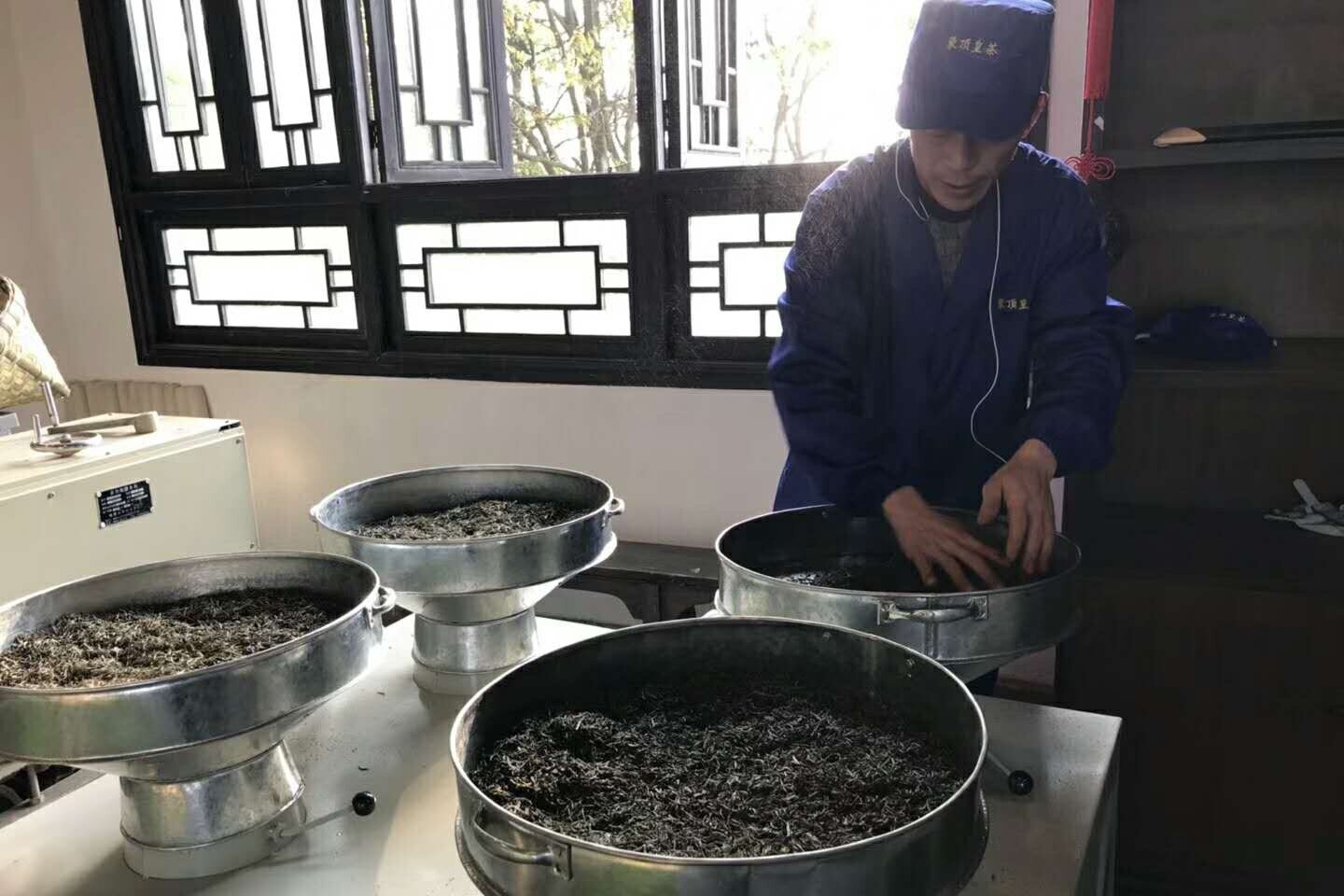MENG DING HUANG YA
Meng Ding Huang Ya 蒙顶黄芽 is a yellow tea from Meng Ding Mountain in Yan’an, Sichuan, China. WAIT… Yellow tea?? Never heard about it! I am sure I wasn’t the only one had that response first time hear about it. It turns out that yellow tea is the rarest tea category both by annual yield and number of tea in the category. The other categories are white, green, oolong, black (red) and dark.
Historically, there are different ways to interpret yellow tea. It could be the natural color of the tea leaves or the visual identification of the tea by its yellow color before the system we establish today.
Yellow tea is characterized by its yellow leave and yellow liquor. What makes the tea unique is it goes through a processing stage called sweltering or heaping, by either wrapping the tea leaves with paper or cover the pile of tea leaves with wet cloth. This process will happen once or many times during different stages of the tea processing depends on each specific yellow tea, but overall the sweltering or heaping will makes the tea oxidize in a very slow rate which creates a mellower and less grassy flavor than green tea. I still remembered its soothing warmth when I tried it first time. Reminds me a lot of the orange wine in comparison to white wine.
The trip to Meng Ding Mountain happened mostly because my kids wanted to see the pandas in Ya’ An, Si Chaun. Mengding Mountain is just right there. Regardless of the slippy mountain roads, misty rain and heavy fog in the summer, how could I resist the thought of visiting a destination of yellow tea? Pandas, of course, were super adorable. The bonus for me there was not only all the learning of the significance of Mengding Mountain in the tea history of China but also that I got to have a closer look and taste all the unique teas produced there. Mengding Huang Ya was one of them.
Mengding Mountain holds its special place in the history of tea because it is said to be where the tea trees were first planted in the world and it was the beginning of the Si Chuan - Tibet route of the Old Tea Horse Road. Moreover, it is the origin of tribute teas like Mengding Gan Lu, Mengding Shi Hua and Mengding Huang Ya. The indigenous group of tea varietals of small-to-medium sized leave tea trees from Si Chuan called Lao Chuan Cha has been a crucial factor of the consistent characters of those teas. Lao Chuan Cha goes through a longer period of dormancy, flushes late, grows slowly and has a low yield. However, they are more resistant to insects, weather changes and mostly has a deeper aroma and richer taste. It would a long journey for Lao Chuan Cha or Yellow Tea like Mengding Huang Ya to find its true place in a world everyone wants things first and the most.
Meng Ding Huang Ya takes the plucks of one bud and one early opening leaves from the Lao Chuan Cha tea trees in the tea gardens with the elevation between 1200m to 1400m. It goes through the standard of making tribute tea by tea masters with at least 20 years of experience, a nearly 72-hours process with 3 times of sweltering and 3 times of pan frying ending with the baking to dry the leaves. The result is its sweetness with deep aroma and smooth warm mouthfeel.
For a long time in history, yellow tea was compressed into tea cakes before the loose leaves start to dominate. In that case, steps of steaming, compressing and drying would be followed.
Baking the tea leaves
Drying after being compressed to cakes
Myths:
Sweltering or heaping vs Wet Piling — Both of these involves meticulous control of heat and moisture. In most content, sweltering refers to a process in Yellow Tea and Wet Piling refers to a process in making Dark tea. The former is less intensive in heat and duration of time. Regardlessly, sometimes people call sweltering as wet piling.
Yellow leave, Yellow Tea — Be aware that some yellowish-looking green tea could be sold as yellow tea. You might also see some bright yellowish green tea of which the color is also the color of the fresh tea leaves and some oolongs like Baozhong would have the yellow leave and yellow liquor. They are different than the yellow tea we are talking here.
Taste of Yellow Tea — Like teas from any other categories, within the yellow tea category the tastes of the tea can vary a lot which makes the exploration of tea so interesting.
Yellow Teas to Explore
Huang Ya
Jun Shan Yin Zhen 君山银针 (Hunan, China)
Meng Ding Huang Ya 蒙顶黄芽 (Sichuan, China)
Huo Shan Huang Ya 霍山黄芽 (Anhui, China)
Huang Xiao cha
Weng Zhou Huang Tang 温州黄汤 (Zhejiang, China)
Mo Gan Huang Xiao Cha 莫干黄小茶 (Zhejiang, China)
Huang Da Cha
Wan Xi Huang Da Cha 皖西黄大茶 (Anhui, China)
Guang Dong Da Ye Qing 广东大叶青 (Guangdong, China)
Summer 2018







